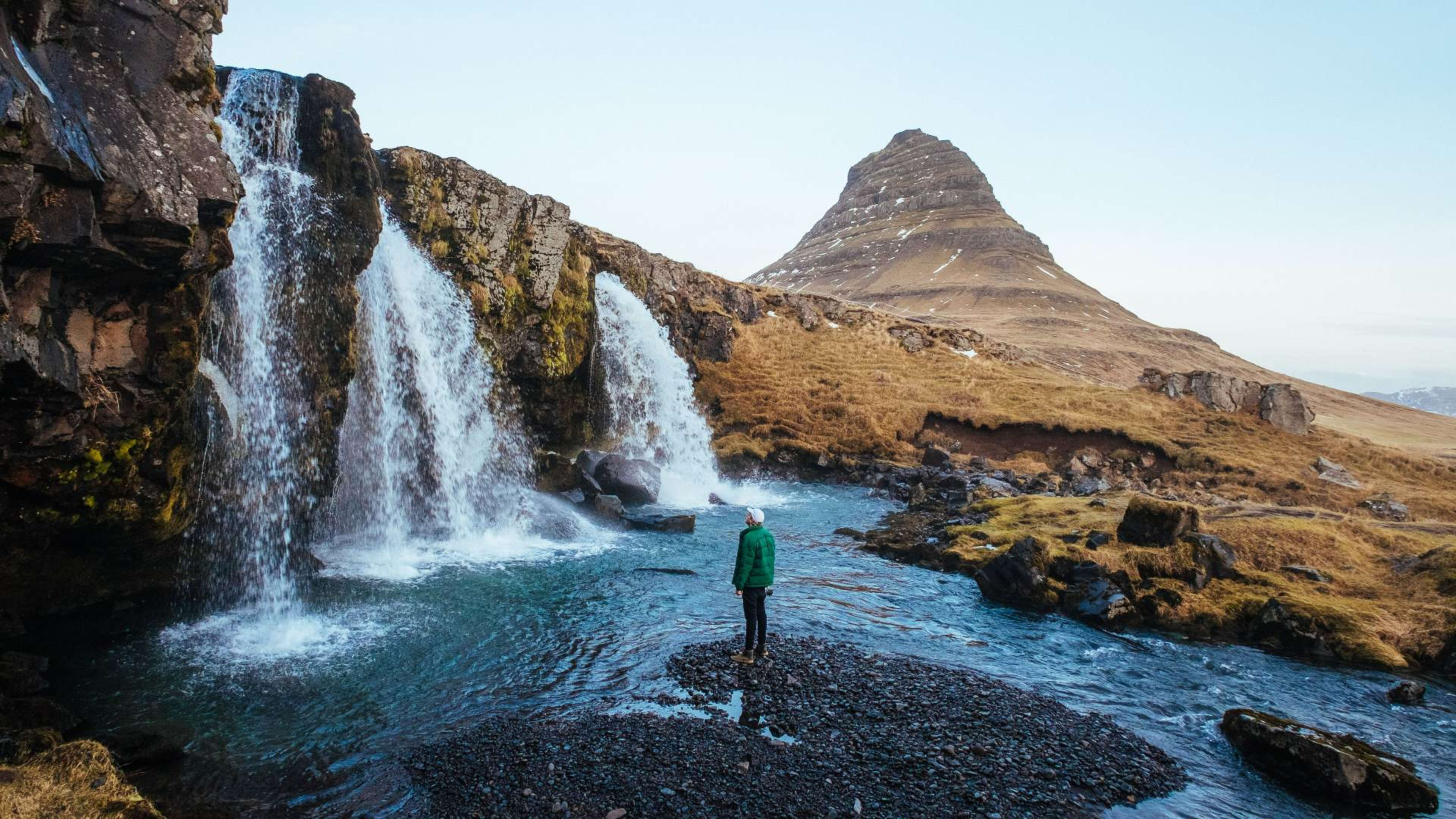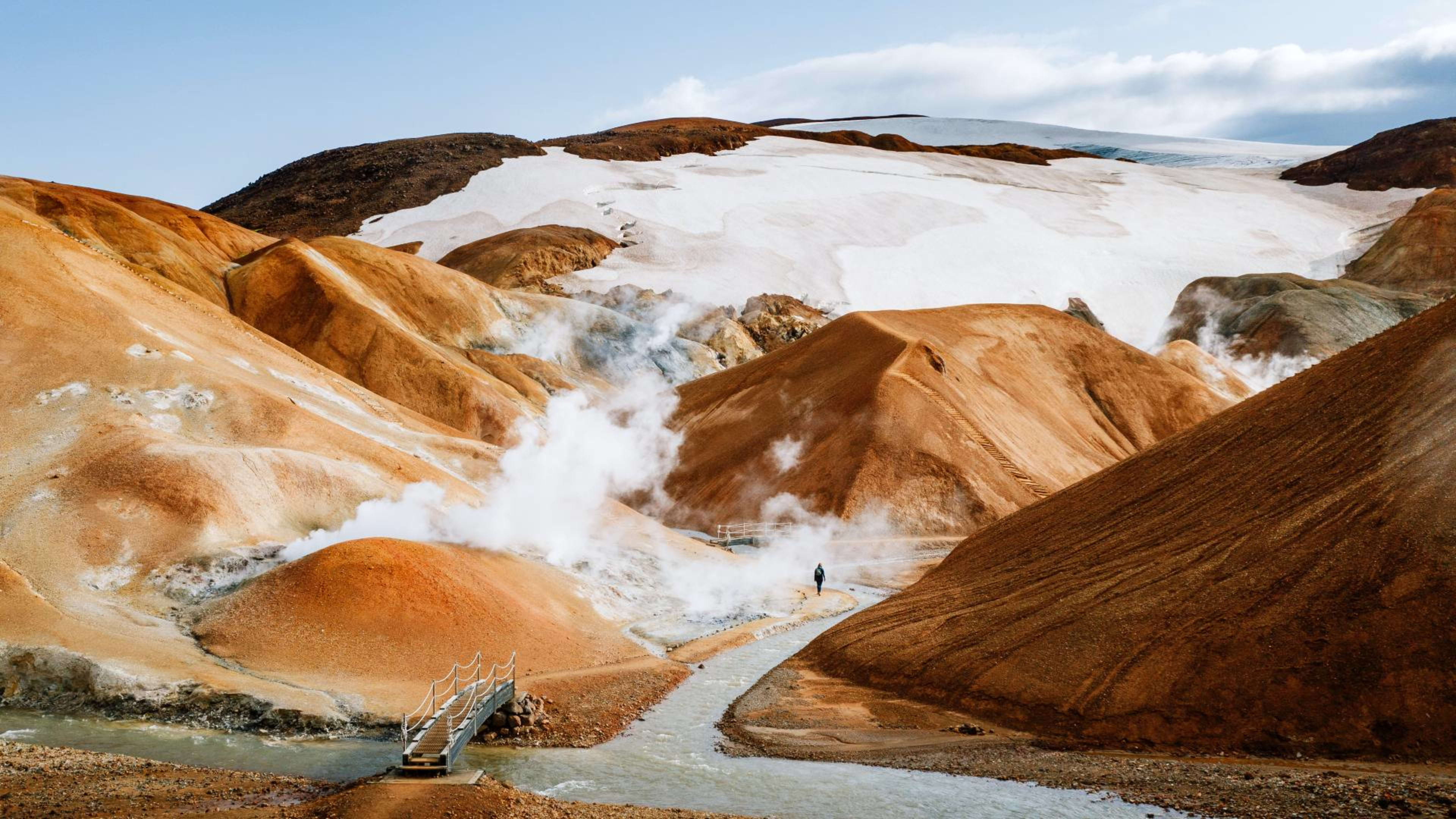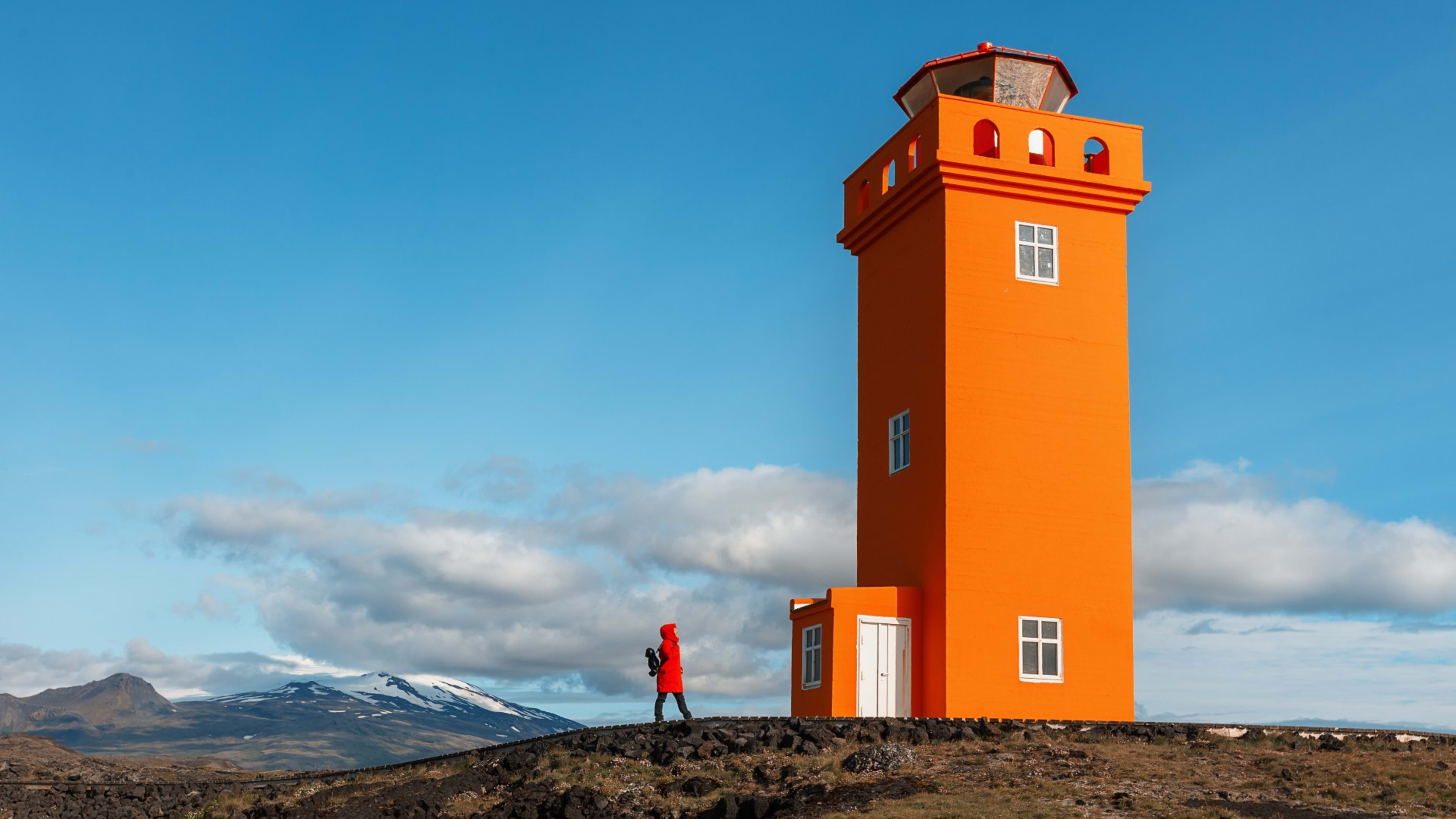Road trips are one of the best ways to see Iceland. You get to explore at your own pace and stop whenever you want at all the breathtaking viewpoints. And there are so many!
How long does it take to drive around Iceland, you ask? Or wondering how much time to set aside for your trip to the Land of Fire and Ice for a road trip?
We’ve compiled all the information you’ll need about the Ring Road below. Discover how long to drive around Iceland in terms of days, a guide to the seasons, and a suggested itinerary.
- Look up all our Iceland self-drive packages to get started with planning your dream road trip.
About the Ring Road
The Ring Road, or Route 1, is the national road that circles Iceland. This is the way you’ll be able to drive around the island. The whole length of it adds up to 1,322 kilometers (821 miles) and it connects most of the inhabited regions of Iceland.
Other regions can be added to your itinerary too. These include:
- The highlands, opened only in summer
- The Snæfellsnes peninsula, often described as “Iceland in miniature”
- Parts of North Iceland, excellent for day detours
- The stunning Westfjords
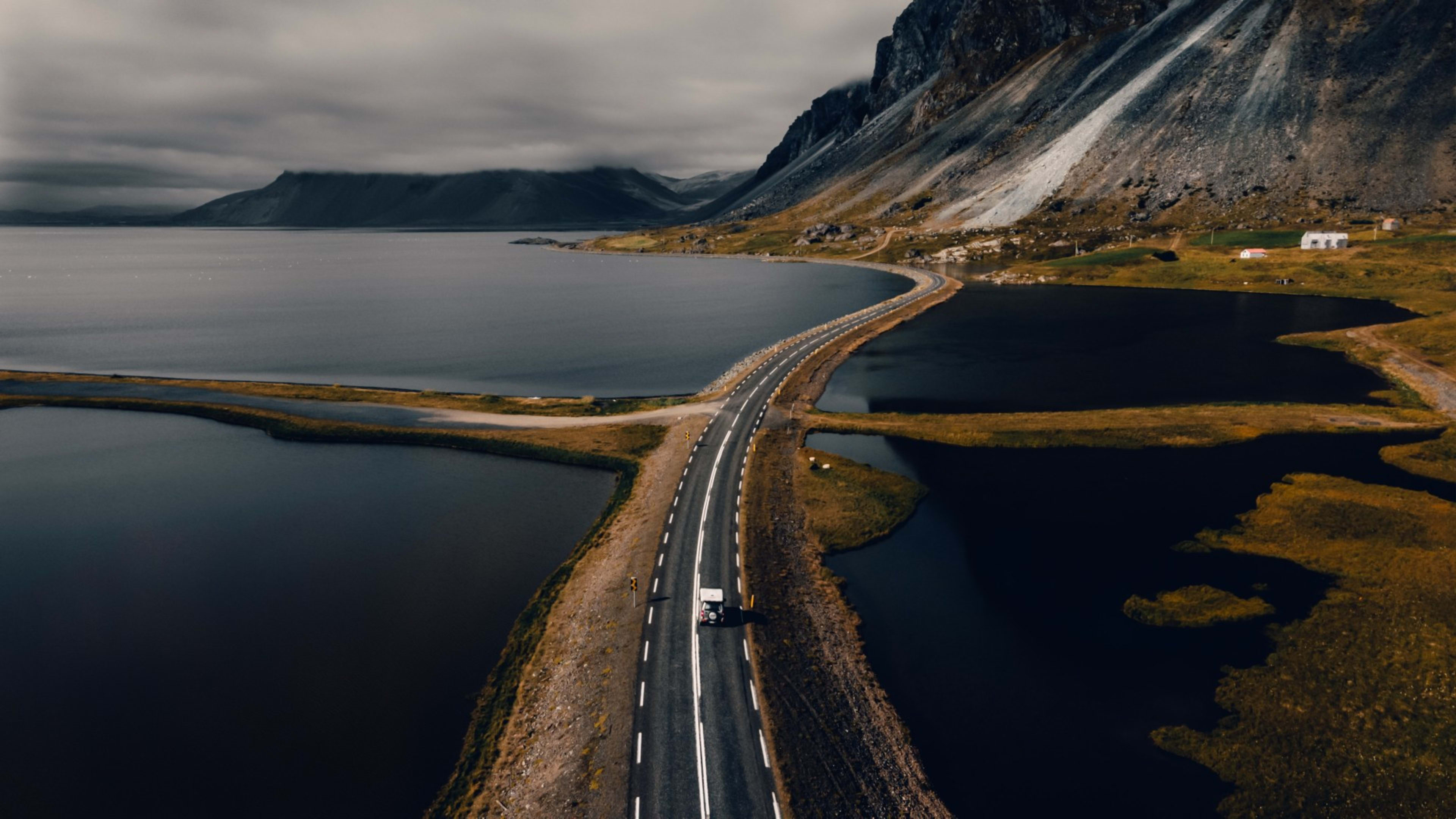
How many days do you need?
In Iceland, the speed limit in urban areas is 50 kilometers (30 miles) an hour and 90 on rural paved roads. This technically means you could tour the entire Ring Road in about 17 hours’ driving time. But that’s not recommended!
Not only because it’ll be an exhausting journey and it’s all dependent on the weather and road conditions, but also because where’s the fun in that? The journey is so important, and in Iceland, the journey is worth taking your time.
We recommend a minimum of a week or 6 days to 8 days in Iceland for a Ring Road trip. This way you’ll be able to drive comfortably around the country while also soaking up the sights.
- Related: Top 7-day Iceland itineraries.
Shorter trips are possible, but to get the most out of them you might want to focus on a specific region of the country. See these 5-day Iceland trip ideas for inspo.
Photograph the vast lava fields, take in the thundering waterfalls, dip in hot springs, and take time to explore the national parks.
Ultimately, it’s up to you. Build your itinerary based on what you’d like to see and discover. If you go off the beaten path or visit in winter, this may result in a longer tour. But that means seeing even more of stunning Iceland, so who would complain?
- View all Ring Road tours for your Iceland road trip.
- Blog: Driving Iceland’s Ring Road – ultimate guide.
Recommended length of travel to drive around Iceland
Wondering how long you should stay for? Or not sure how many places you can visit during your planned vacation? We break it down for you based on different timelines.
Less than a week: Not recommended
If you’re visiting for a few days, consider doing a city break or a short road trip to the south coast.
Stay in Reykjavík and go on day tours to visit top attractions such as the Golden Circle. Or pick a region, like the west or south coast, to explore in more depth.
- Find an Iceland city break to suit you.

7–10 days: Taste of Iceland
This is a good amount of time to visit Iceland if you want to drive around the Ring Road. With at least 7 days, you should be able to make your way around the country comfortably while visiting the top sights.
In summer, with the extra daylight hours, you could plan an action-packed getaway.
10+ days: In-depth exploration
With 10 days and more, you start being able to take your time and really delve into Iceland’s culture, history, and formidable natural landscape.
The possibilities are endless. You could spend more time in certain locations, instead of rushing through. Stop at all the breathtaking attractions you want and maybe even go off the beaten path to explore remote regions.
Imagine going for day-long hikes or adding fun, unique activities to your itinerary. These will make your adventure in Iceland even more memorable.
- Leave the driving to someone else by booking a private tour of Iceland.
- Related: 17 Best day hikes in Iceland.
When should you visit to drive around Iceland?
Iceland’s changeable climate can impact the way you’ll travel and what you can visit during your vacation.
For that reason, pick your season depending on what you’re interested in seeing and doing. Both the winter and summer seasons have benefits, so don’t rule either out just yet.
Driving around Iceland in summer
Summer in Iceland is during the months of June, July, and August, which make up the high season and attract the most visitors. This is thanks to its endless daylight, best weather of the year, and access to hiking trails and remote areas, such as the Highlands.
Visit during this time if you like to go hiking, maybe even dip in the sea, or enjoy birdwatching.
Yes, you should expect to find more visitors at top attractions at this time of year. But visiting Iceland in summer means you’ll be able to take advantage of the longer daylight hours to explore more of the country.
For good weather and fewer fellow travelers, come during the shoulder season, in May or September.
- Check out summer tours to Iceland.
- Or browse camping tours in Iceland.
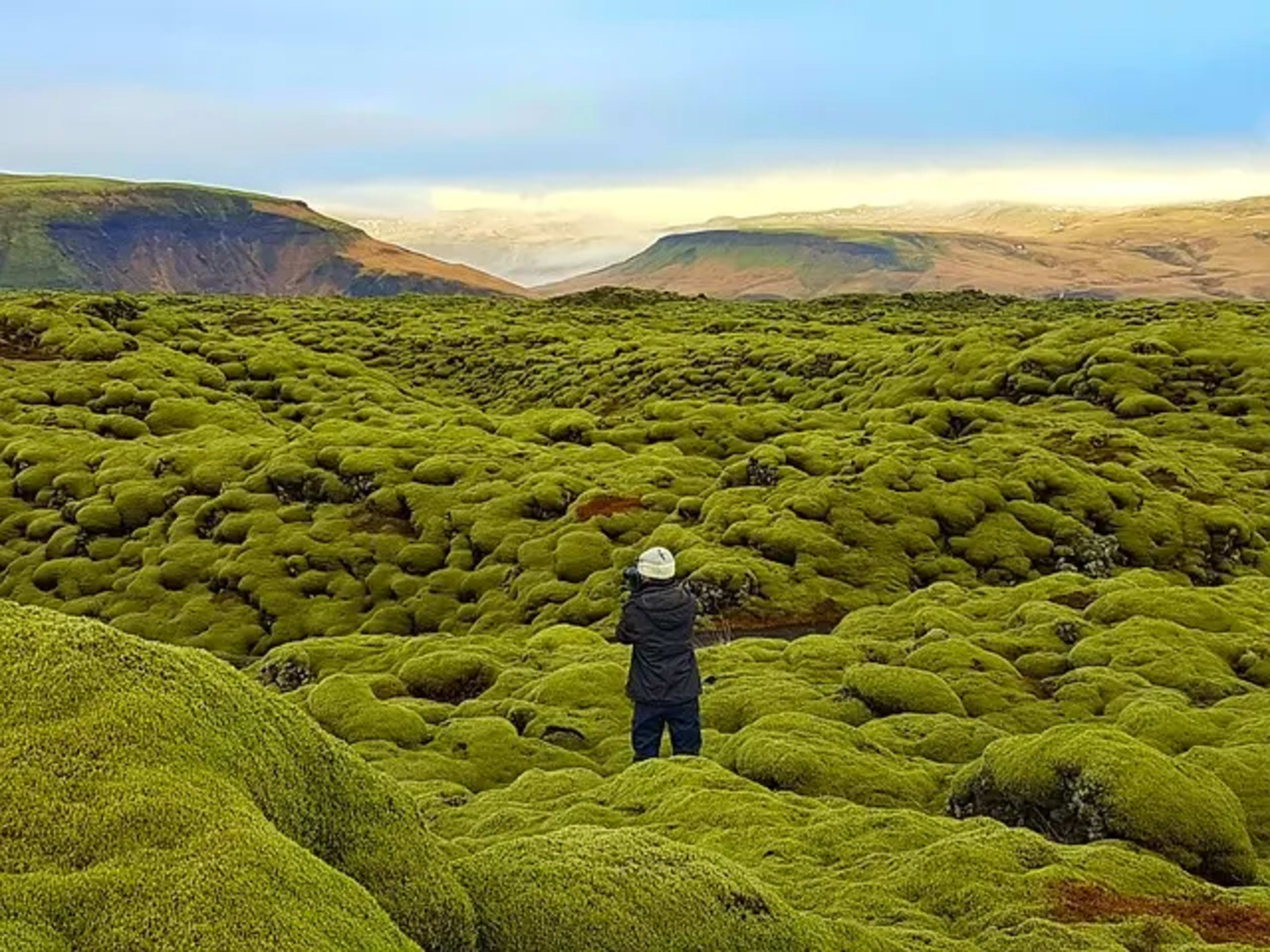
Driving around Iceland in winter
The Icelandic winter is the low season, but attracts more and more visitors, thanks to the colorful light show of the Northern Lights. This is the main benefit of traveling at this time, although sightings are never guaranteed.
- Look up winter tours in Iceland for a snowy getaway.
- Blog: Iceland in winter – must sees and must dos.
You’ll also enjoy the white and frosty landscape as well as the possibility to dip in hot springs while it’s snowing around you. It’ll make your stay even more magical!
At this time, however, you can expect mountain roads to be closed and driving to be a bit slower due to the conditions.
If you’ll be driving in Iceland between November and March, be aware to:
- Take your time driving on icy roads
- Check on weather and road conditions before setting off each day
- Keep an eye on your map and do not rely solely on GPS
- Hire a 4×4 car to have a more comfortable and safer experience
Itinerary suggestion for driving around Iceland
If you browse through our website, you’ll be able to find plenty of Iceland itineraries depending on how much time you have. The following is a 12-day itinerary suggestion if you want to travel around the whole country, including the Westfjords and Snæfellsnes peninsula.
Day 1: Arrive in Iceland
Depending on when you fly into Iceland, you’ll have the rest of the day to explore Reykjavík. The capital city is a treasure trove of interactive museums, fun activities, cozy cafés, and excellent restaurants.
If you would like to relax after your flight, you could also book a slot at the Blue Lagoon to dip into the geothermal waters. This is the perfect way to decompress before setting off on your adventure!
Day 2: Snæfellsnes peninsula
Today you start your road trip by heading to the Snæfellsnes peninsula. You’ll first drive through the Borgarfjörður area with its landscape of vast fields and waterfalls. Once you reach Snæfellsnes, take some time to visit the beach Djúpalónssandur, and admire the basalt columns of Gerðuberg and seaside rock formations at Arnarstapi.
Day 3: Journey to the Westfjords
Half of your day will be taken by a scenic ferry ride from the Snæfellsnes peninsula to the Westfjords. You can start discovering this remote region of Iceland at your leisure. One of the recommended stops on the south coast is Rauðisandur with its reddish-colored sand.
- Find out more about this stunning region with our guide to the Westfjords.
Day 4 and 5: Explore the Westfjords
You have two whole days to discover the gems of the Westfjords, an area few people take the time to explore. The landscape is characterized by high bird cliffs, sweeping sea views, dramatic fjords, and high mountains.
We recommend stopping by the majestic Dynjandi waterfall. On the way, take in the stunning coastal scenery and pass by quaint villages like Flateyri as well as the unofficial capital of the Westfjords, Ísafjörður.
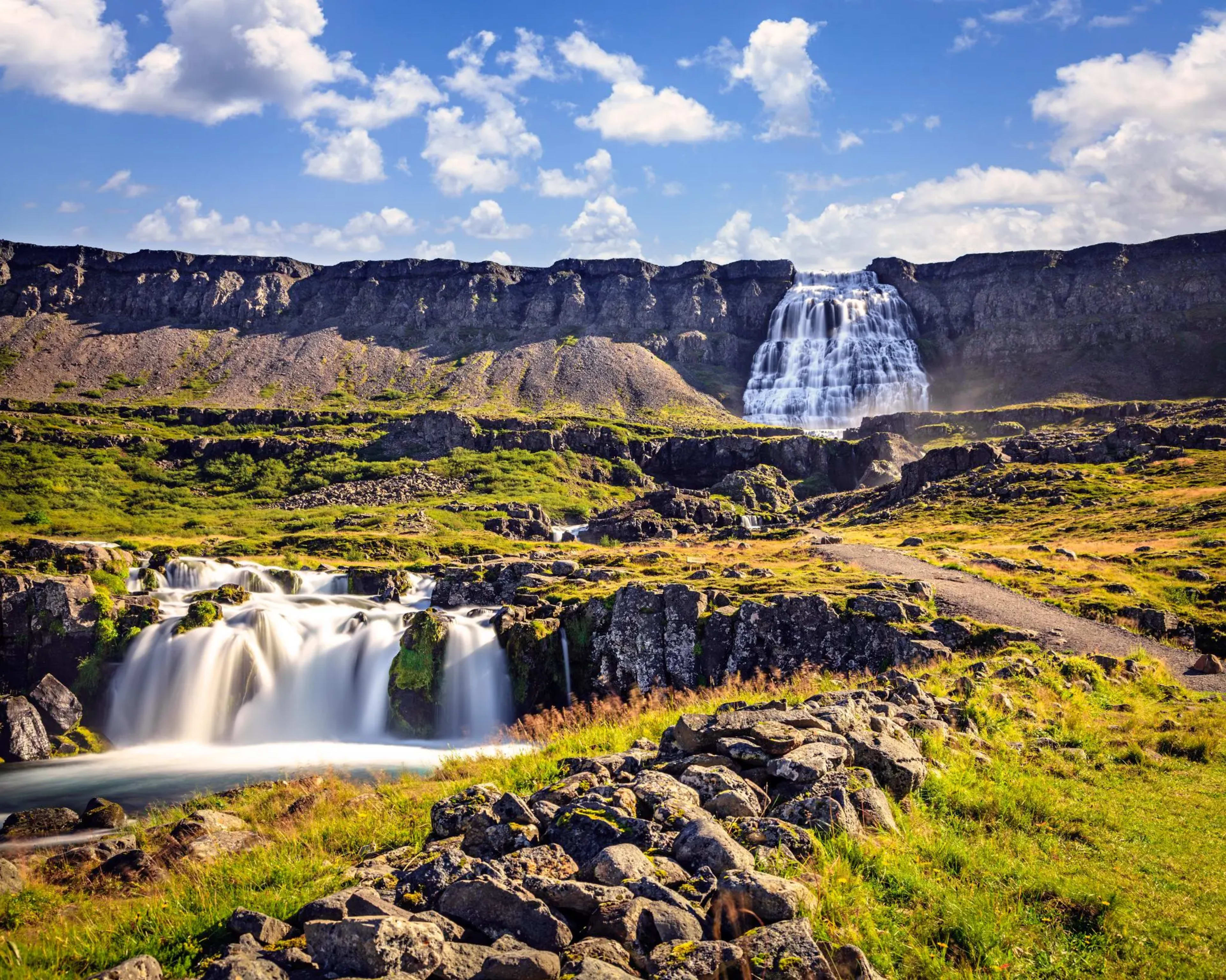
Day 6: North Iceland
Continue on to North Iceland, all the way to the capital of the region, Akureyri. You’ll pass through Skagafjörður, an area known for exceptional horse breeding. Keep an eye out for stocky Icelandic horses as they can be seen grazing along the way.
- Check out all the thrilling activities and day trips you could add to your Iceland itinerary.
Day 7: Lake Mývatn area
You are staying for a second night in Akureyri, but you still have a day of adventure ahead of you. Drive to the Lake Mývatn Nature Reserve to see why it is one of the most inspiring areas in Iceland.
On the way, don’t miss the impressive Goðafoss, known as “the waterfall of the gods”.
Day 8: Exploring the northeast
Are you a fan of whales? Start the day by driving to the charming fishing village of Húsavík. It is known as the capital of whale watching in Iceland.
You’ll then follow the coast and drive the Tjörnes peninsula. We recommend making a pit stop at the extremity of the peninsula to enjoy the view and try to spot some seabirds.
Continue your journey south to East Iceland. For leg-stretching stops, we highly recommend the lush canyon of Ásbyrgi and Dettifoss waterfall.
Day 9: The Eastfjords
Today you drive through East Iceland and discover the Eastfjords. You may think of Norway when you hear of fjords, but this region would give it a run for its money. At times, the road hangs precariously on the mountain slope providing stunning views below.
Day 10: Highlights of the southeast
Today you’ll stop by one of Iceland’s biggest bucket list sights. After passing various outlet glaciers from Vatnajökull, Europe’s largest ice cap, you’ll arrive at Jökulsárlón glacier lagoon. Many travel to Iceland just to see its glistening icebergs.
In summer, you could book a boat trip to go onto the lagoon to see the bobbing icebergs from up close. You can then spend some time at Skaftafell. This natural oasis, surrounded by glaciers and stark black sand beaches, is ideal for hiking.
Day 11: The Golden Circle
Today, you’ll visit highlights of the south coast. See the water being propelled in the air by Strokkur at the Geysir area. Walk through history and marvel at the geology of Thingvellir National Park (or Þingvellir). Photograph the majestic Gullfoss waterfall.
If you are visiting for a shorter amount of time, don’t miss a Golden Circle tour as it is an ideal day trip from the capital.
As you make your way back to Reykjavík, stop by Skógafoss and Seljalandsfoss. These last two waterfalls will not disappoint!
Day 12: Departure
And just like that, your journey in Iceland is over. Make your way back to Keflavík Airport for your flight home. Depending on what time it is, you may have time to squeeze in more activities in Reykjavík.
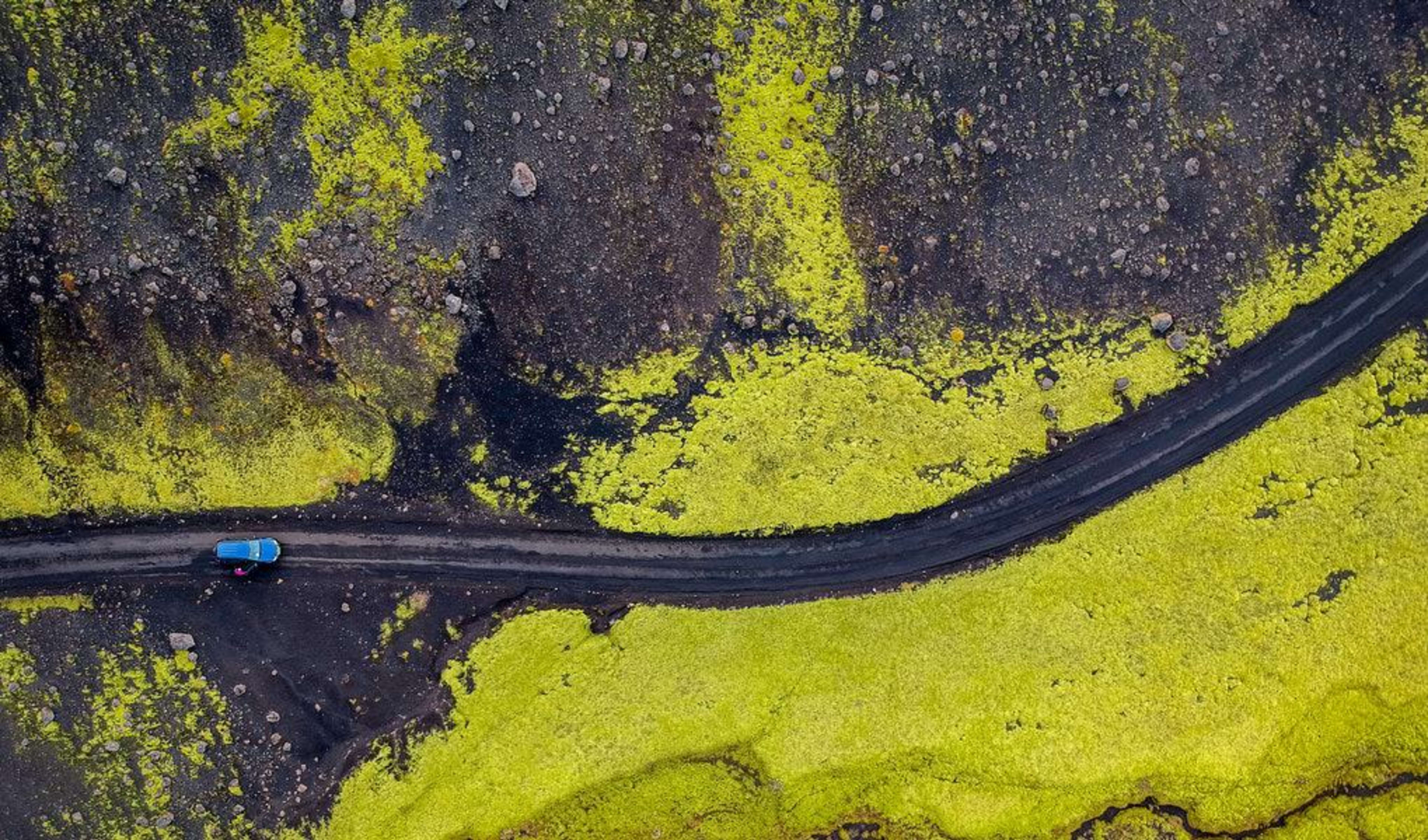
- Related: How long do you need in Iceland?
Booking your Icelandic road trip
When asking how long it takes to drive around Iceland, you’re taking the first step in planning your road trip to the Land of Fire and Ice.
What is left to do is:
- Plan what you want to see most
- Book your transportation and accommodation
- Add any activities to your itinerary
- Familiarize yourself with driving rules
Getting an idea of what you’d like to see will help direct you to when to visit and where to go. Iceland is so full of marvels and unique experiences and you’ll need to narrow it down.
To rent a car and reserve your accommodations and activities, start organizing in advance. Whether you want to spend the night camping or in a budget hotel, accommodations can book out early, especially in summer.
It’s the same for fun activities. From touring ice caves to horse riding and relaxing at the Blue Lagoon, arrange them early to avoid disappointment. And remember these will enrich your itinerary even more.
Finally, make sure to pack wisely. Look into getting a map and a GPS and bring a phone you can use when you’re on the road. And fear not, credit cards are widely accepted in Iceland for petrol, food shops, and even ice cream.
Maybe you want help with it all. Then why not trust a local company like Iceland Tours?
It’s simple. You pick the itinerary you’re interested in and then you add in your car and accommodation preferences. You can also select optional activities and day tours. All while keeping an eye on your budget.
- Browse self-drive tours of Iceland based on your preferred length of travel.
Now you should know what to expect when you come to drive around Iceland.
If you want to know or you’re ready to book the road trip of a lifetime, get in touch with our travel consultants.


